Designing a home you love means figuring out where to invest and where you can afford to hold back. I’ve watched the right splurges totally change a space, while smart savings keep things realistic. If you’re working on your home, it’s honestly wise to spend a bit more on foundational stuff—like a quality sofa for the living room or a solid bed in your bedroom.
Remember to repin your favorite images!
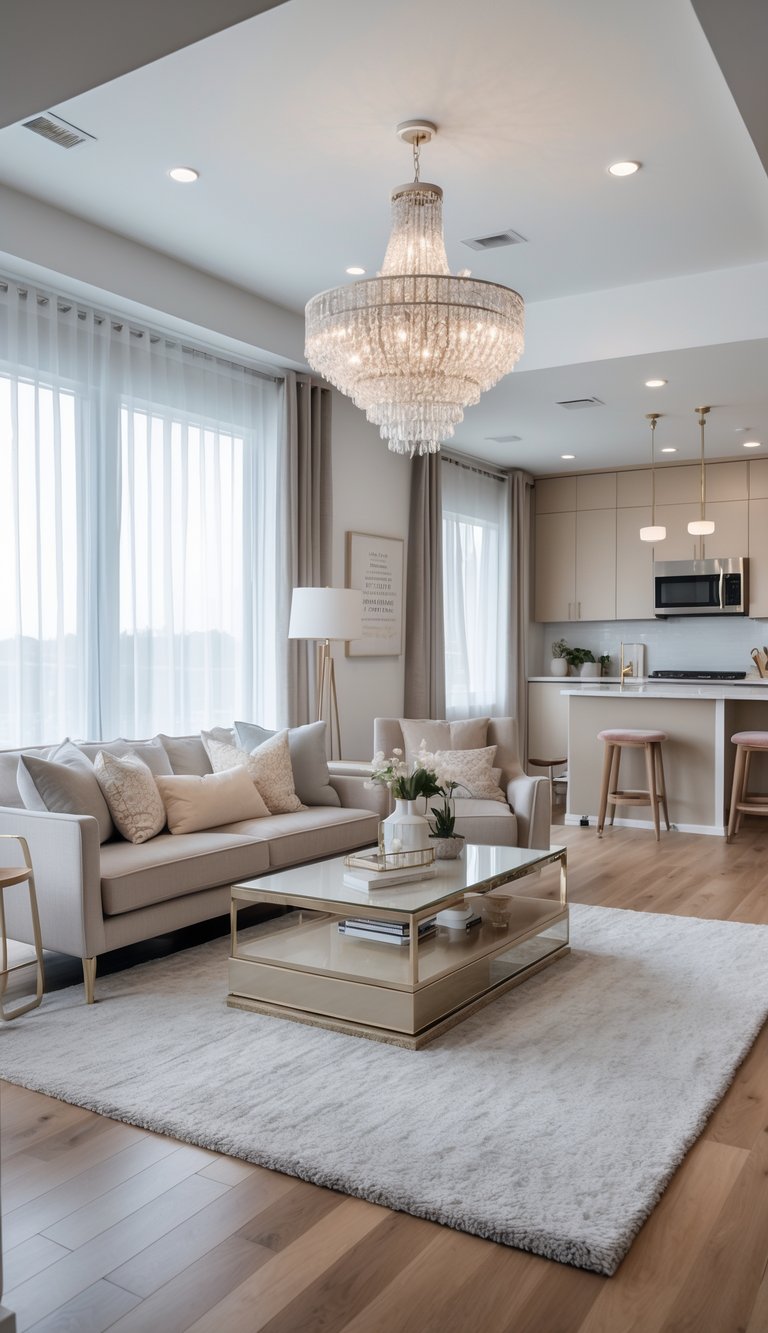
Think of home design as a balancing act. Those well-made rugs might seem pricey at first, but they hold up for years and look good doing it.
Decorative accents—what designers call “the smalls”—don’t have to cost much. You can find budget-friendly pieces that give your place personality without killing your budget.
Put your money toward the things you use every single day. High-traffic spots and comfort items aren’t great places to cut corners.
When you invest in the essentials and save on things you can swap out easily, you get a home that feels both luxurious and practical.
The Philosophy of Splurge vs. Save in Home Design
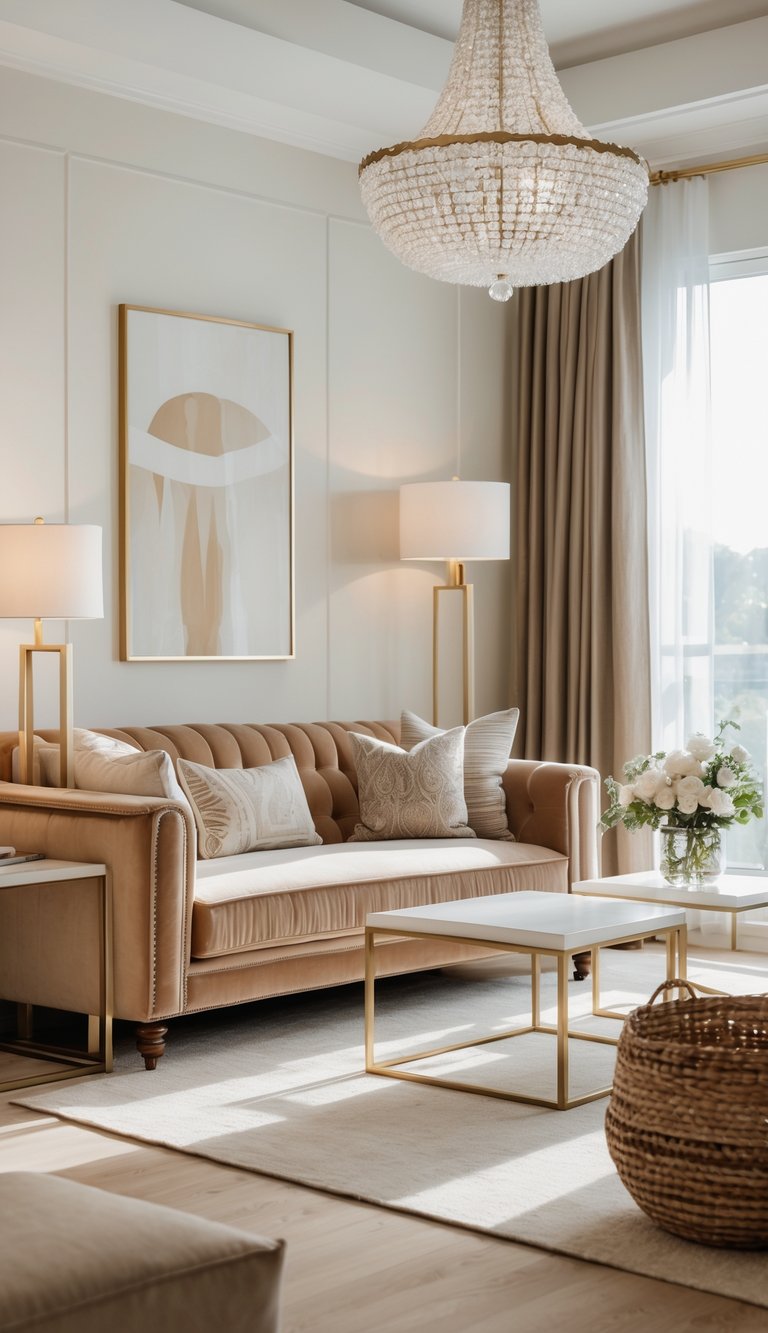
You don’t need a limitless budget to make your home beautiful. It’s all about smart choices—knowing where to spend and where to save.
Strategic spending stretches your budget and boosts the final look.
Balancing Functionality and Aesthetics
The best home designs mix good looks with real-life function. If you use something every day, it deserves more of your budget.
In busy spots like living rooms, spend on sofas and chairs built to last. A sturdy sofa costs more upfront but won’t fall apart after just a few years.
Save your cash on trendy décor pieces that are easy to swap out as your tastes change. Pillows, throws, and small accessories can be affordable and still pack a punch.
When you’re torn between two options, ask yourself if you’ll use it daily. If so, it’s probably worth the splurge.
Impact on Resale Value
Your spending choices can affect your home’s value down the road. Some upgrades pay off way more than others.
Worth the Splurge:
- Kitchen upgrades (think solid cabinets, good countertops)
- Bathroom renovations
- Hardwood floors
- Energy-efficient windows
Save Your Money On:
- Fancy, ultra-high-end appliances
- Super-personalized features
- Trendy fixtures that will look dated soon
Focus on improvements that most buyers will appreciate. A professional-grade kitchen is nice, but most people won’t pay extra for features they’ll never use.
Keep in mind what’s standard for your neighborhood. If you go way overboard, you might not get that money back.
Long-Term Cost Considerations
Sometimes, the real value of something comes from how long it lasts, not just the price tag. “Cost per use” is a handy way to think about it.
A good mattress impacts your sleep and health every night for years. Spending more now can mean better rest and fewer replacements later.
Major appliances are another example. Energy-efficient models might cost more upfront, but they’ll save you money on your bills over time.
For stuff that takes a beating, like entryway floors or kitchen faucets, pick durability over bargain prices. You want things that can handle years of wear.
Don’t forget about maintenance. Cheap materials might seem like a deal, but if you’re always fixing or replacing them, you’re not really saving.
High-Impact Home Design Elements Worth Splurging On
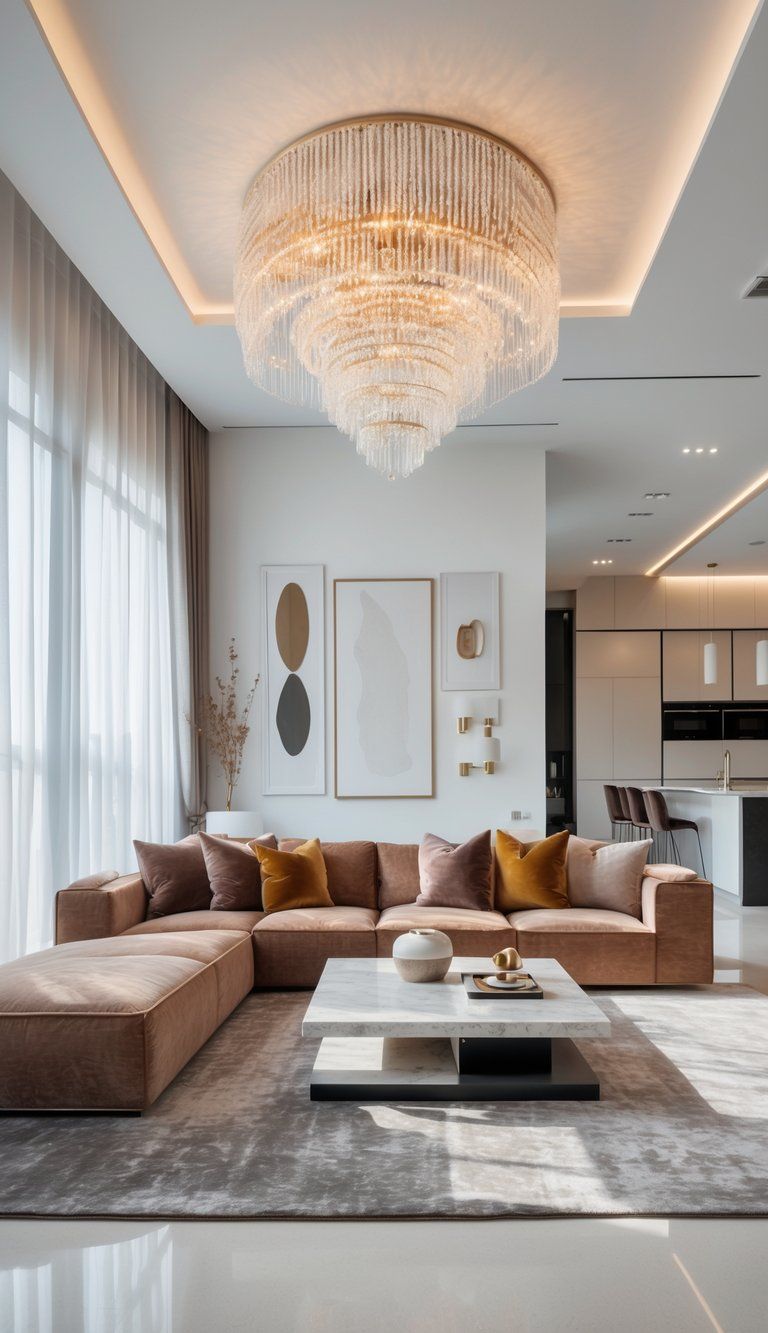
Some design choices just deliver more bang for your buck. The right investment pieces—especially the ones you use every day—can totally change how your home feels.
Lighting Fixtures and Light Placement
Lighting can make or break a room. Good lighting fixtures are both practical and eye-catching.
When you’re picking lighting, think about putting your money toward:
- Statement chandeliers or pendants in dining rooms or entryways
- Wall sconces for mood lighting
- Task lighting in kitchens or workspaces
Where you put your lights matters as much as the fixtures. A great lighting plan uses layers: ambient, task, and accent.
You can get away with budget-friendly lighting in some areas, but in spots everyone sees—like the dining room or entryway—go for quality.
Better fixtures use nicer materials, look more polished, and spread light more evenly. They also last longer, so you won’t be replacing them all the time.
Sofas and Living Room Sofa Selection
Your living room sofa is worth a splurge. Bonnie Ammon, a designer I respect, always says to spend on the things you use most, and the sofa is a classic example.
A great sofa should have:
- A solid hardwood frame
- Eight-way hand-tied springs
- High-density foam cushions
- Durable, quality fabric
You’ll spend thousands of hours on your sofa over the years. A well-made sofa can last over a decade, while cheaper ones might not make it five years.
Stick with classic, neutral styles. That way, you can change up your look with accessories instead of replacing the whole sofa.
Custom Cabinetry and Built-In Shelving
Custom cabinetry and built-ins really change the game. They’re beautiful and super functional.
Custom pieces:
- Use every inch of space
- Fit your specific storage needs
- Blend right into your home’s architecture
- Can boost resale value
Quality kitchen cabinets with solid construction and premium hardware can handle daily use for years. Built-in shelves or entertainment centers in living spaces create a focus and solve storage headaches.
Custom stuff costs more up front, but you won’t waste space or need extra furniture. Plus, it gives your home a polished, custom feel.
Statement Pieces That Elevate Interiors
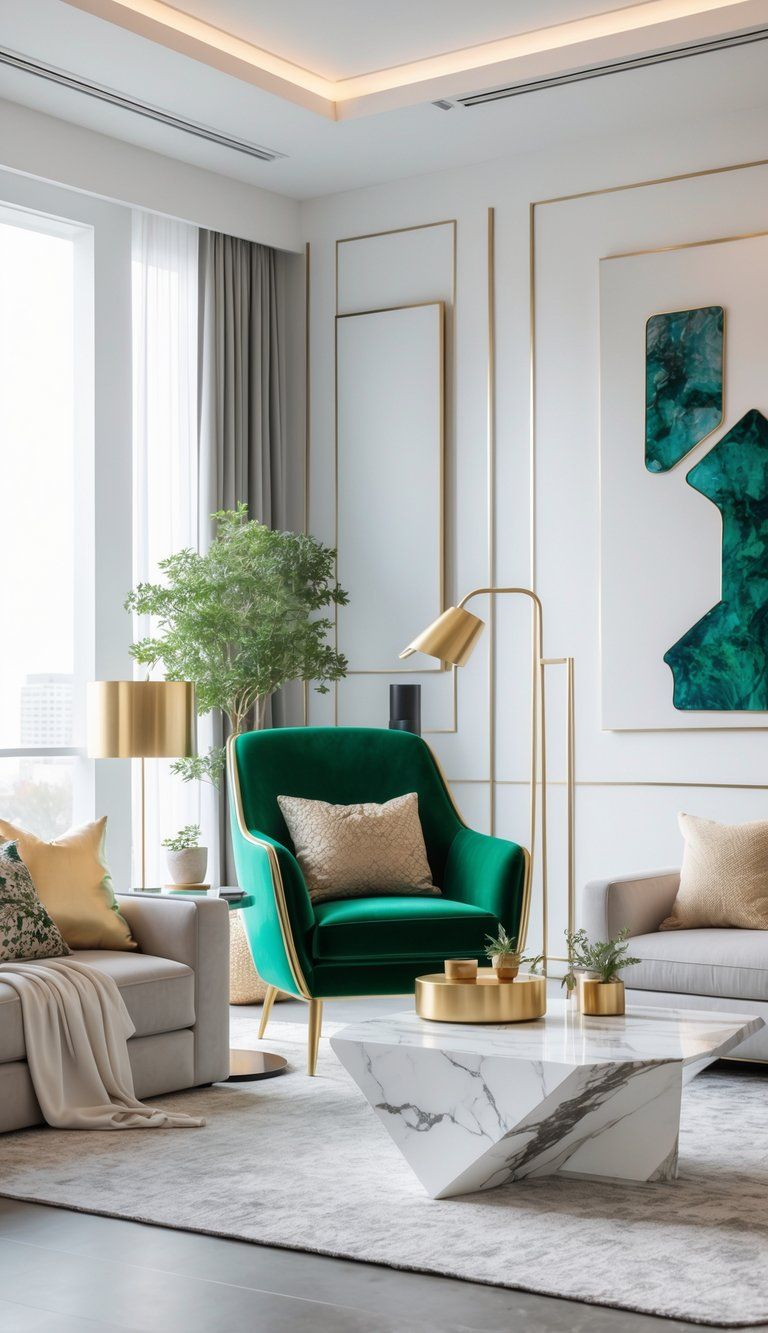
Statement pieces give a space its soul. They grab your attention and make a room memorable, showing off your style in the process.
The right statement piece adds interest and sparks conversation.
Architectural Interest and Unique Features
Architectural details bring character to your home. Invest in custom built-ins that look amazing and add storage.
Crown molding, wainscoting, or ceiling medallions can turn a plain room into something special.
Exposed beams, especially in rooms with high ceilings, make a big impression. You can use real beams or lighter decorative ones.
Worth the splurge: Archways between rooms add elegance and frame views. They’re not cheap, but they really set a home apart.
Unique fireplace mantels or surrounds become instant focal points. Carved stone, reclaimed wood, or decorative tile take these features to the next level.
Mirrors and Accent Tables
A large, well-placed mirror opens up a room and bounces light around. Go for frames with interesting textures or shapes that fit your vibe.
Designer tip: Put mirrors across from windows to double your natural light and make the room feel bigger.
Accent tables with bold designs are like functional art. Try:
- Waterfall edge tables made from live-edge wood
- Tables with sculptural metal bases
- Vintage or antique finds with lots of character
- Glass-topped tables with cool bases
One amazing accent table beats a bunch of forgettable ones any day.
Unlacquered Brass Accents
Unlacquered brass has a timeless look and develops a unique patina as it ages. Unlike shiny, lacquered brass, this finish changes over time, giving your home a bit of history.
Start with hardware—cabinet pulls, doorknobs, light switch plates. These little touches add warmth and style.
Brass light fixtures make a real statement. Try pendant lights over a kitchen island or a chandelier in the entry.
Worth noting: Unlacquered brass does need some upkeep, but a lot of people love how it tells the story of their home as it changes.
Where to Splurge in Soft Furnishings
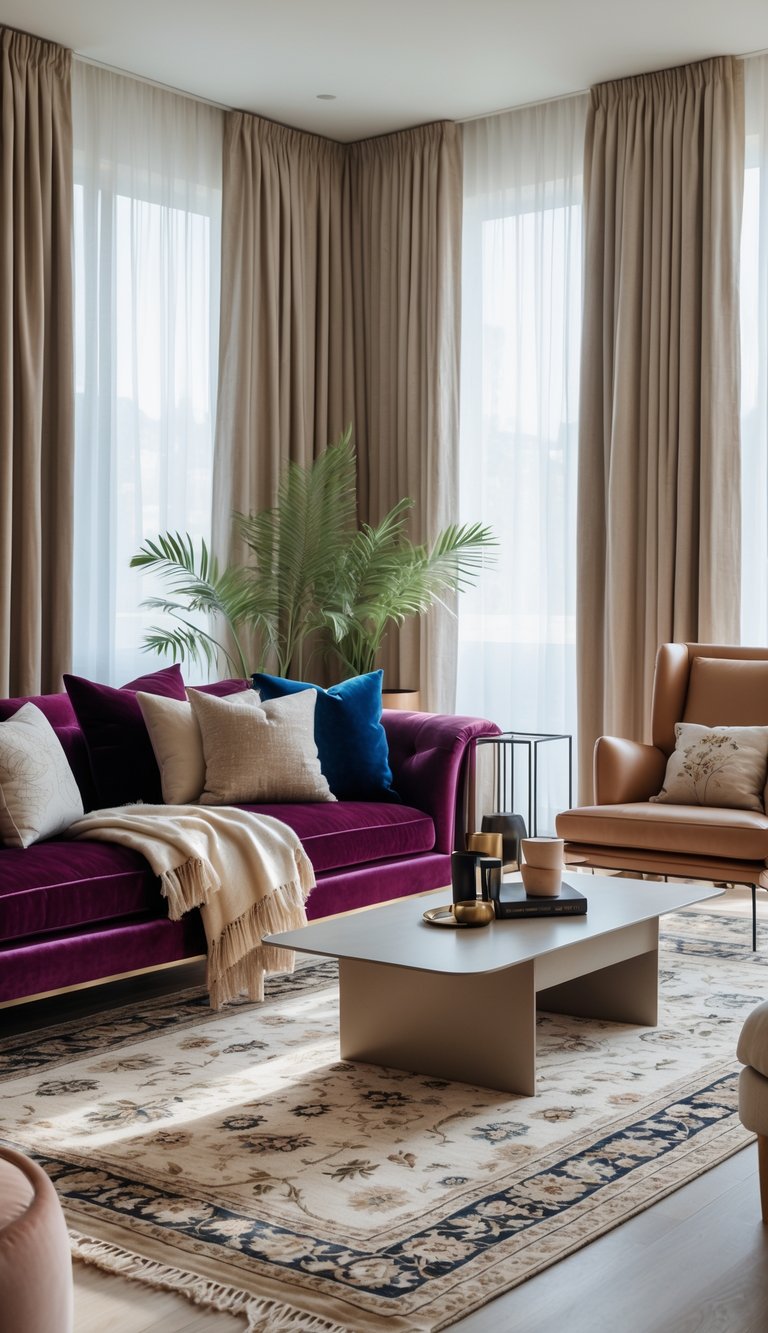
Soft furnishings are what you touch every day, so it makes sense to invest in comfort and durability. The right textiles can completely shift how your home feels.
Quality Upholstery and Upholstered Furniture
High-quality upholstered furniture is well worth the money. A good sofa with premium fabric can last over a decade, while cheaper ones might not survive half that long.
Look for hardwood frames, eight-way hand-tied springs, and dense foam cushions. These details keep your furniture comfy and looking good.
Natural fabrics like cotton, linen, and wool usually hold up better than synthetics. If you’ve got kids or pets, consider performance fabrics with stain resistance.
Custom upholstery lets you get the exact look and fit you want. It’s pricier, but these pieces often stick around through the years.
Investing in a Good Mattress
A quality mattress is one of the best home investments you can make. You spend about a third of your life sleeping, so it matters.
Premium mattresses offer better support, keep you cooler, and cut down on motion transfer. Look for at least a 10-year warranty, and expect to spend $1,000–$3,000 for a good queen size.
Your best mattress depends on how you sleep. Side sleepers often like memory foam or hybrids; back and stomach sleepers might prefer something firmer, like latex or innerspring.
Try out mattresses in person if you can. Many brands now offer trial periods, so you can see if it’s the right fit before you commit.
Top-Tier Bedding and Textile Choices
Great bedding changes how you sleep and how your bedroom looks. Don’t get hung up on thread count—fiber quality is what really matters.
Worth the splurge:
- 100% cotton sheets made from long-staple fibers (Egyptian, Pima, Supima)
- Down or high-quality down-alternative duvets
- Natural wool blankets
- Good pillows that support your sleep style
Custom drapes are another smart textile investment. They fit your windows perfectly and help with light and insulation.
For everyday textiles like throw pillows, mix it up. Splurge on nice covers, but it’s fine to save on the inserts.
The Best Elements to Save On in Home Design
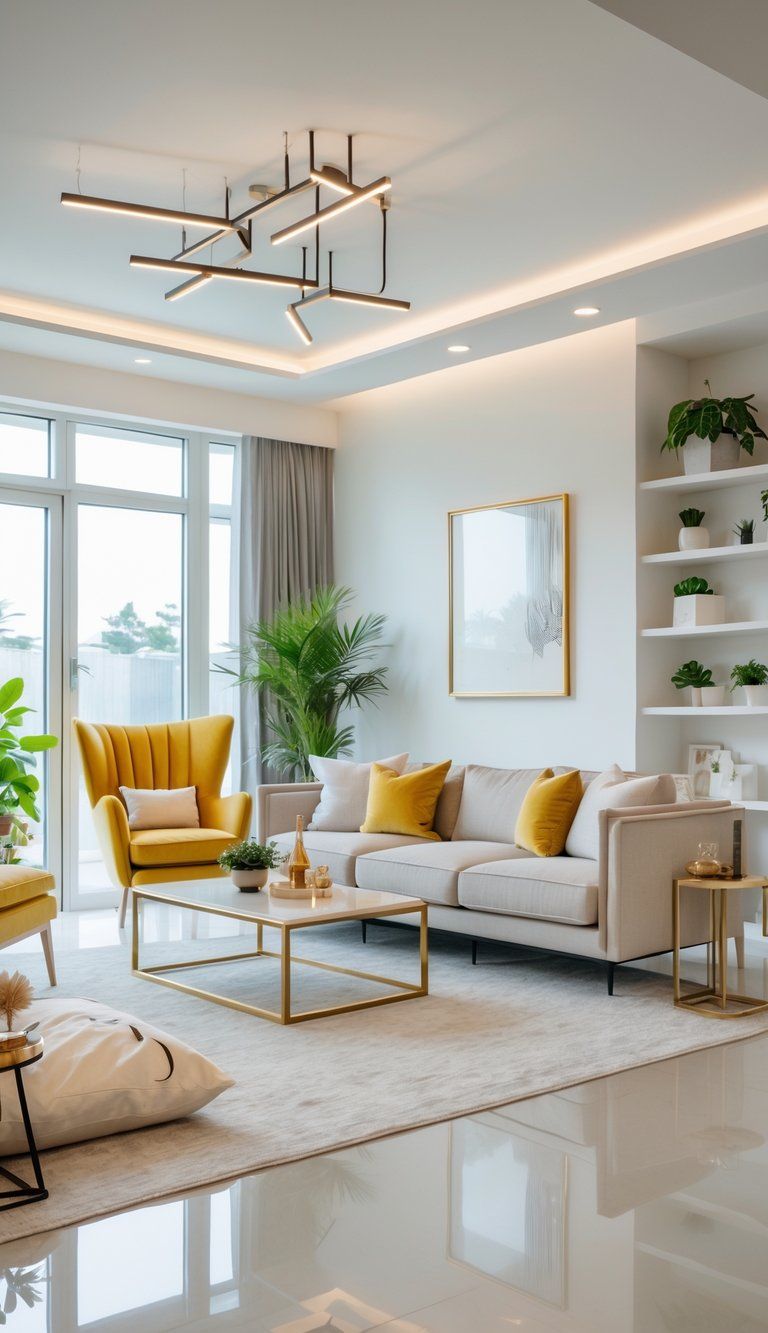
Not everything in your home needs to be expensive. When you know where to save, you can focus your budget on the pieces that matter most.
Selecting Wallpapers and Paint Finishes
Wallpaper’s back in style these days, but you really don’t have to break the bank. Plenty of budget-friendly wallpaper brands offer stylish patterns for way less than designer prices.
Try peel-and-stick options that usually run $30-60 per roll. Skip those custom papers that can easily hit $200+ per roll.
When it comes to paint, saving makes a lot of sense too. Mid-range paints ($25-40 per gallon) usually perform almost as well as the pricey brands ($50-80 per gallon).
Honestly, the color you pick matters more than the label in most rooms.
If you’re watching your budget, try these ideas:
- Go for vinyl wallpapers instead of grasscloth.
- Pick digital prints over hand-painted designs.
- Use flat paint in spots that don’t get much traffic.
- Grab paint sample pots for small accent walls.
Affordable Accent Pieces and Throw Pillows
Accent pieces and throw pillows are the sweet spot for saving cash. Most people swap them out with the seasons or whenever trends shift anyway.
Big box stores and online shops have tons of stylish options that won’t empty your wallet.
Throw pillow covers are especially budget-friendly. You can usually find them for $10-25. Just swap the covers and keep the same inserts—super easy and saves on storage space too.
Other accessories that make sense to save on:
- Decorative bowls and vases: Thrift stores often hide some real gems.
- Picture frames: A quick spray paint job can make cheap frames look custom.
- Seasonal decor: Since you only use these for a short time each year, don’t splurge.
- Trendy pieces: No need to invest much in things you’ll probably swap out soon.
Art prints from online marketplaces often cost under $30 and can look surprisingly impressive with the right frame.
Smart Savings on Functional Features
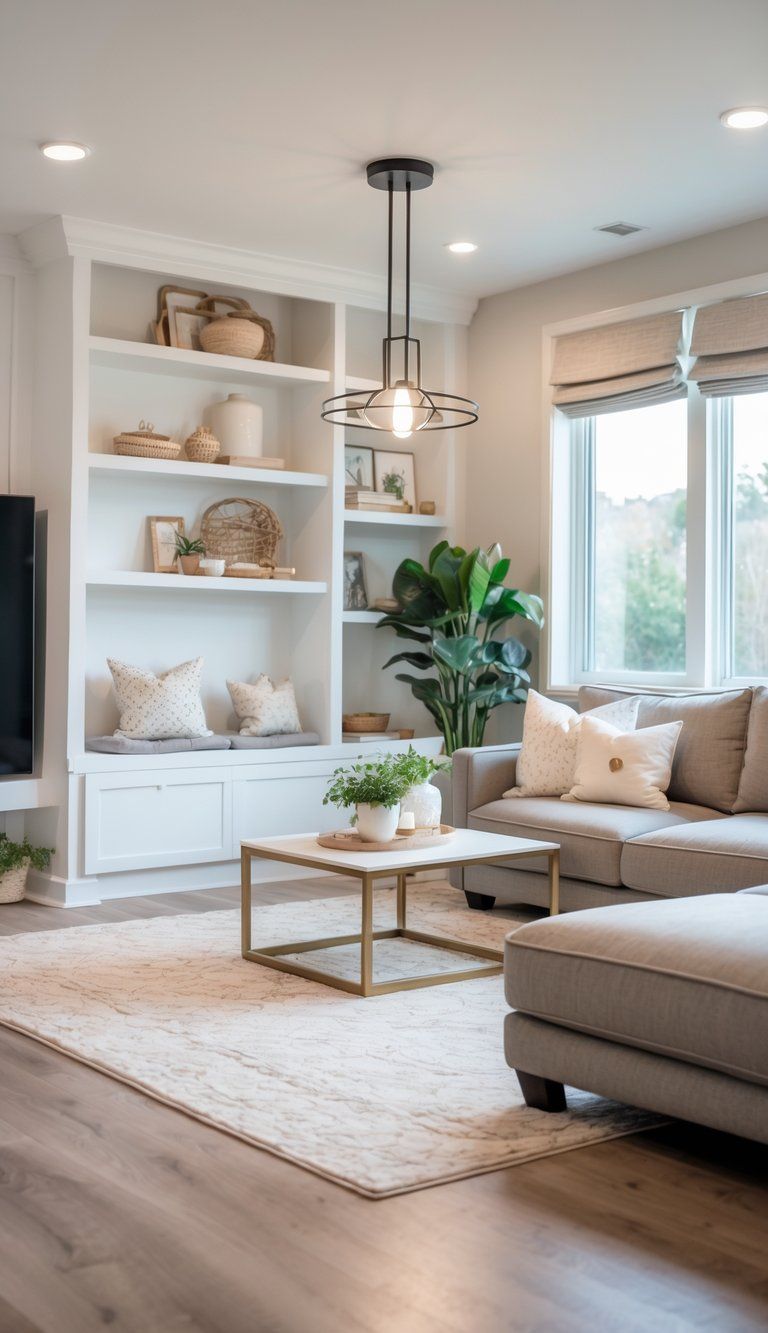
You don’t have to splurge on every home feature. Some things are worth the investment, but others? You can save big without losing out on quality or style.
People who decorate smartly know how to cut costs on practical features that work well and look good.
Cost-Effective Flooring Solutions
Luxury vinyl plank (LVP) flooring has seriously changed the game for budget renovations. Modern LVP looks a lot like hardwood, but it’s way cheaper ($2-7 per square foot installed, compared to $8-25 for real hardwood).
Plus, LVP handles water and daily wear much better.
Engineered hardwood is another smart pick if you want the real wood vibe for less. The top layer is actual hardwood, but the other layers use cheaper materials.
Laminate flooring has gotten way better in recent years. Now you can find options that mimic wood or stone, and they’re tough enough for busy households.
Try these money-saving flooring moves:
- Put the nicer floors in main living spaces, and use cheaper options in bedrooms.
- Lay down area rugs to bring style to basic flooring.
- Stick with neutral colors so your floors don’t look outdated too quickly.
Budget-Friendly Window Treatments
Ready-made curtains and blinds can save you a bundle compared to custom options. Stores like IKEA, Target, and Wayfair sell stylish window coverings starting under $30 per window.
Thermal curtains are a smart buy if you want energy efficiency. They block out heat and cold, and you might even save 10-25% on your energy bills. Usually, they don’t cost much more than regular curtains.
Roman shades made from affordable materials can give your windows a high-end look. Cotton duck and linen blends keep things elegant without the high price.
DIY window film is another trick for privacy and UV protection. It costs way less than custom treatments, and you can find frosted, decorative, or even heat-blocking versions now.
Mixing up your window treatments helps too. Use basic blinds for privacy, then hang simple curtain panels just for style.
Accessorizing Thoughtfully: High-Impact, Low-Cost Additions
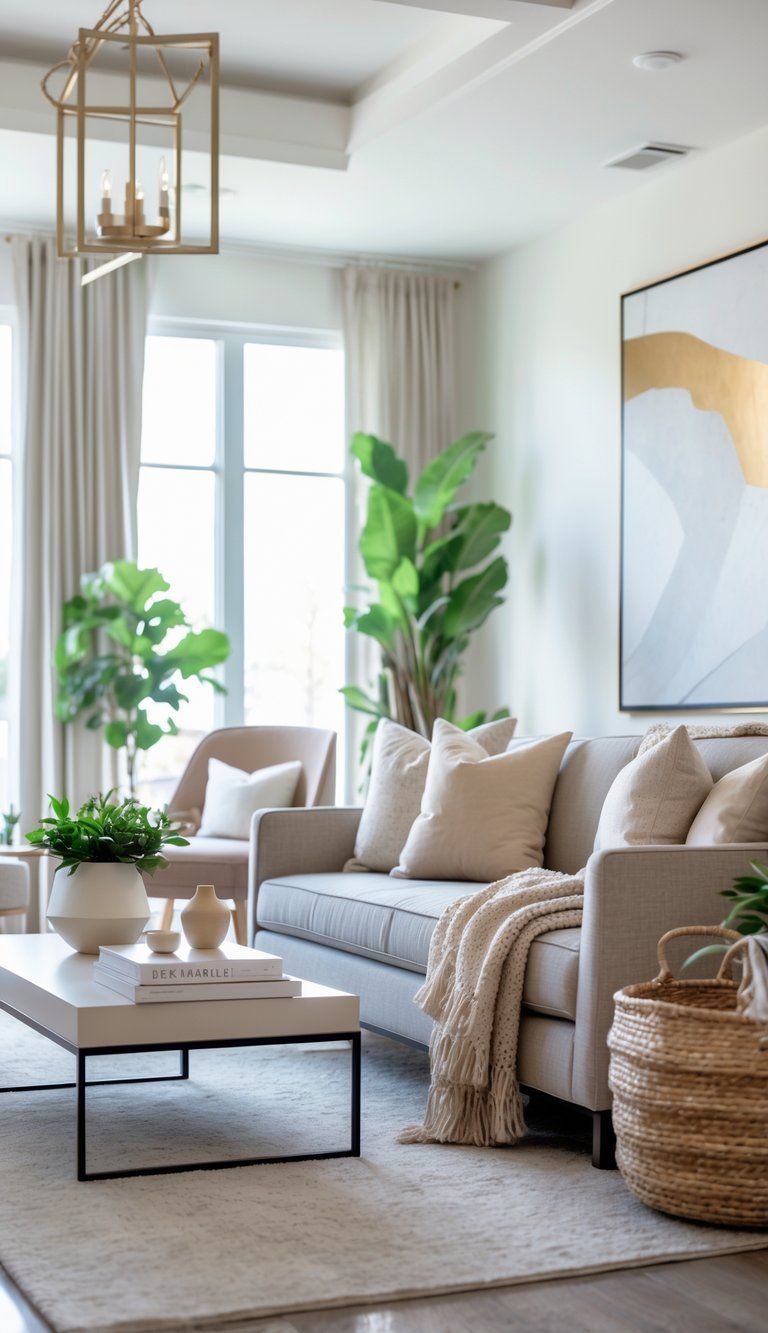
Small decor details can totally change the vibe of your home without costing much. These quick updates bring a lot of visual punch for not much money.
Potted Plants for Style and Warmth
Plants are hands-down one of the cheapest ways to freshen up any room. Just a few potted plants can bring life, color, and texture to spaces that feel a bit flat.
Mix up the heights and leaf shapes for the best effect. Maybe a tall fiddle leaf fig in the corner, some small succulents on a shelf, and a trailing pothos on your bookcase.
If you’re not great with plants, don’t stress. Some fake plants these days look so real, you’d never know the difference—and you never have to water them.
Try grouping plants in odd numbers, like three or five, for that designer look.
Swap out those basic plastic pots for woven baskets, ceramics, or even brass containers to instantly upgrade their style.
Plants do more than just look good—they can boost air quality and make your space feel more relaxed. That’s a win-win in my book.
Conclusion: Making Strategic Design Decisions
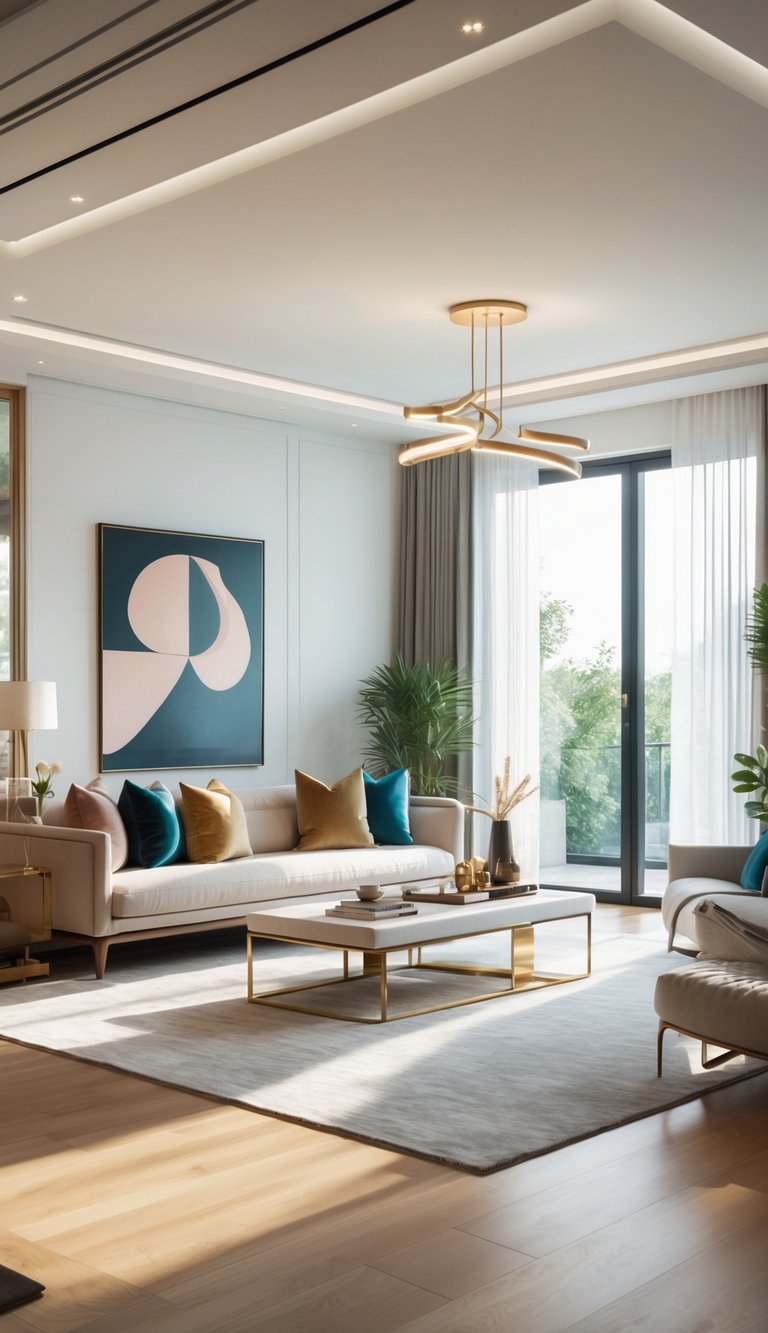
Designing your dream home takes some real thought about where to splurge and where to cut back. Your choices should feel true to your style, but also make sense for your wallet.
High-quality pieces in the right spots can really lift the whole look and feel of your place. According to the search results, smart design choices don’t just make your home look good—they can actually bump up its value and appeal.
When you’re setting your budget, try to keep these ideas in mind:
- Invest in permanence: Put your money toward things you won’t want to swap out soon, like flooring or cabinetry.
- Save on trendy items: Go for cheaper options when it comes to things you might want to update in a couple of years.
- Balance quality and cost: Aim for that sweet spot between luxury and practicality.
If you feel stuck, working with a professional can really help. Interior designers know how to steer you away from common mistakes and make the most of your budget.
Location matters—a lot. Sure, saving on land can be tempting, but grabbing a prime spot usually pays off in the long run.
At the end of the day, your own taste should lead the way. Let your home reflect what you love and what fits your life. With a bit of planning, you can create a space that feels right and makes sense financially too.

